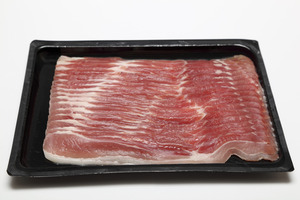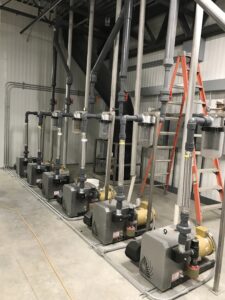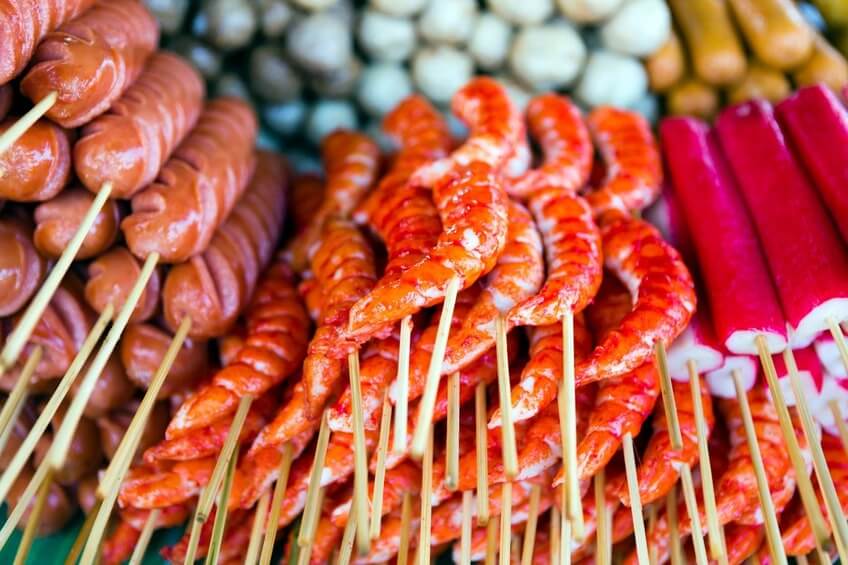Precision, hygiene, and efficiency are paramount when processing meat, poultry, and seafood. Whether enjoying a perfectly marinated steak, savoring a plate of fresh seafood, or indulging in a juicy roast chicken, the journey from the slaughterhouse to plate is a complex process. One unsung hero that plays a crucial role in this journey is the vacuum pump. In this blog post, we will explore how vacuum pumps are instrumental in ensuring the quality, safety, and longevity of meat, poultry, and seafood products.
Poultry Evisceration
Vacuum pumps are commonly used in poultry evisceration, which is the process of removing the feathers and internal organs (viscera) from slaughtered poultry, such as chickens and turkeys. The primary purpose of using vacuum pumps in this context is to assist in the removal of the viscera and ensure a clean, sanitary, and efficient evisceration process. Here’s how vacuum pumps are utilized in poultry evisceration:
- Suction Nozzles: These nozzles are placed strategically along the evisceration line to collect and transport the removed viscera, blood, and other waste materials. Vacuum pumps create a low-pressure environment in these nozzles, allowing for the efficient transfer of material through a network of pipes to a waste disposal system.
- Controlling Airflow: The vacuum pump’s ability to control airflow is crucial in maintaining the integrity of the evisceration process. It ensures that the viscera are properly and cleanly removed without damaging the bird’s body.
- Waste Management: In addition to aiding evisceration, vacuum pumps are used to manage and transport waste materials away from the processing line. This is an essential aspect of maintaining hygiene and preventing contamination during poultry processing.
The type of vacuum pump used in poultry evisceration systems varies, but some common types include:
- Rotary Vane Vacuum Pumps: These pumps are known for their reliability and are often used in poultry processing. They generate a consistent vacuum for the picking and waste management systems.
- Liquid Ring Vacuum Pumps: Liquid ring vacuum pumps are used when there is a need for tolerance to liquid and solid contaminants, such as blood and small pieces of viscera.
- Dry Claw Vacuum Pumps: Dry claw vacuum pumps are efficient and operate without the need for oil, making them suitable for applications where contamination must be minimized.
In poultry evisceration, maintaining a clean and efficient process is critical for food safety and quality. Vacuum pumps play a significant role in achieving this by ensuring that the removal of viscera is done accurately and cleanly, while also facilitating the disposal of waste materials.
Marination and Flavor Enhancement
 One of the critical applications of vacuum pumps in the meat, poultry, and seafood processing industry is marination. Vacuum tumblers or marinating machines employ liquid ring or rotary vane vacuum pumps to remove air from the marinating chamber. The air removal creates a low-pressure environment, allowing marinades to penetrate the meat or seafood more effectively. Reduced pressure causes the muscle fibers to expand, resulting in better absorption of flavors and seasonings and a tastier and more tender end product.
One of the critical applications of vacuum pumps in the meat, poultry, and seafood processing industry is marination. Vacuum tumblers or marinating machines employ liquid ring or rotary vane vacuum pumps to remove air from the marinating chamber. The air removal creates a low-pressure environment, allowing marinades to penetrate the meat or seafood more effectively. Reduced pressure causes the muscle fibers to expand, resulting in better absorption of flavors and seasonings and a tastier and more tender end product.
Improved Shelf Life and Quality
When packaging these perishable products, vacuum pumps play a vital role in extending their shelf life. Oil-lubricated rotary vane pumps are often used in Modified Atmosphere Packaging (MAP), a standard method in the industry. The MAP process involves removing air from packaging materials and sealing them tightly. By eliminating oxygen and reducing the risk of spoilage, vacuum-packed meat, poultry, and seafood stay fresh for extended periods without artificial preservatives. This process ensures that consumers enjoy products with optimal taste and texture. In processes where oil contamination is a concern, oil-free rotary vane pumps or dry rotary claw pumps are often used as well.
Preventing Oxidation and Freezer Burn
 In the case of seafood and frozen products, vacuum pumps are essential in preventing oxidation and freezer burn. Oxygen promotes the degradation of fats, which can lead to undesirable changes in flavor and texture. Vacuum packaging seafood products ensures they remain in a low-oxygen environment, preserving their quality. Additionally, by removing air, vacuum packaging minimizes the risk of freezer burn, where moisture on the product’s surface crystallizes leading to a loss of texture and flavor. Rotary vane and rotary claw pumps are often found in thermoforming machines and tray sealing machines.
In the case of seafood and frozen products, vacuum pumps are essential in preventing oxidation and freezer burn. Oxygen promotes the degradation of fats, which can lead to undesirable changes in flavor and texture. Vacuum packaging seafood products ensures they remain in a low-oxygen environment, preserving their quality. Additionally, by removing air, vacuum packaging minimizes the risk of freezer burn, where moisture on the product’s surface crystallizes leading to a loss of texture and flavor. Rotary vane and rotary claw pumps are often found in thermoforming machines and tray sealing machines.
Reduction of Microbial Growth
Vacuum pumps create airtight environments in food processing, inhibiting harmful microorganisms’ growth. This is especially critical in the meat industry, where bacterial contamination can pose a significant health risk. Vacuum-sealing meat and poultry significantly reduces the risk of microbial growth, leading to safer products for consumers.
The role of vacuum pumps in processing meat, poultry, and seafood is critical. From marination to packaging, these essential devices contribute to the quality, safety, and longevity of the products in our grocery stores and on our plates. The technology behind vacuum pumps ensures that consumers can enjoy flavorful, tender, and safe meat, poultry, and seafood products, whether savoring a steak, relishing a plate of seafood, or digging into a roast chicken. So, the next time you enjoy a perfectly cooked meat or seafood dish, take a moment to appreciate the silent workhorse of food processing—the vacuum pump.

